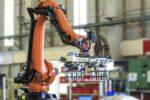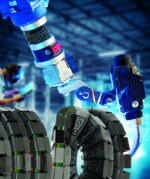When EMEX 2021 comes to town
-Doug Green, Publisher, NZ Manufacturer In the 1860’s – way back then – New Zealand entered the world market as a trader, primarily through the agricultural sector. Growing things. Since that time, a lot has happened. Now, in 2021, we are celebrating the 40th anniversary of EMEX, the prime manufacturing trade fair in New Zealand being held at ASB Showgrounds, Geenlane from 15-17 February. Over those 40 years New Zealand manufacturers have appeared at the show all with enduring stories of success to share. These include Addington Engineering, Tait Electronics, Buckley Systems, Gallagher Engineering, Fletcher Steel, Brown Brothers Engineering, A & Price. Suppliers of equipment such as Techspan, Enerpac, Weldwell, Total CNC, Lucas Machinery, Tasman Machinery, Chevpac Machinery. Industry support has come from Callaghan Innovation, HERA, The Manufacturers Network, MBIE, EMA and the Chamber network. All groups working with the shared passion of making business better for their members. Exhibitors have come from Australia, Asia, Europe and the United States. Trade representatives from countries such as Australia, Germany and China work closely with XPO Exhibitions Ltd to share information and provide opportunities for trade between their countries. The strength of EMEX – apart from the enduring support of manufacturers and suppliers – is also seen in the speaker series which provide valuable insights and discussion into trends in the marketplace, regulations and assistance for manufacturers, forward thinking and vision- building pictures for the future (and direction) of manufacturing in New Zealand. And, of course, to inspire aspiration. In these times of the virus, we look at the future of manufacturing and what it means for a country like New Zealand, parked just above Antarctica and Stewart Island. It is essential that manufacturers, suppliers, decisionmakers have an EMEX to focus on, make business connections and working together to build on the […]










